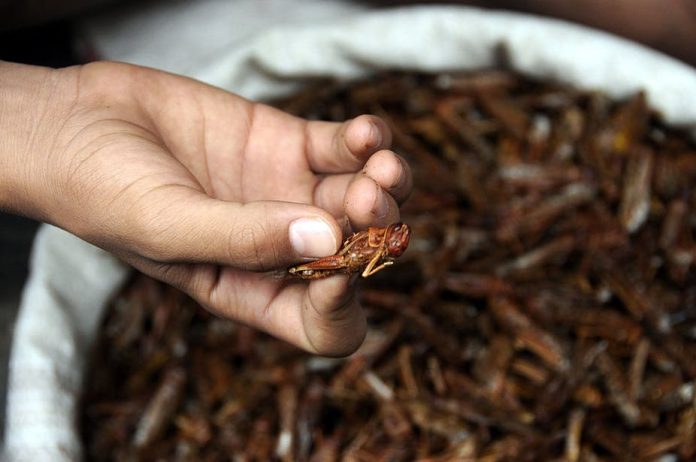Massive swarms of locusts are sweeping across South Asia, the Middle East and the Horn of Africa. The current outbreak is the worst in recent decades. One million hectares of land is under threat in eight countries in the Horn of Africa. This is a crisis and a serious threat to crops, economies and livelihoods. New bands and swarms are currently forming so the crisis will continue for several more weeks.
Locusts are a group of short-horned grasshoppers. They are mostly solitary, but under certain conditions they rapidly multiply in numbers and form swarms.
In some of the countries affected by the locust swarms, where millions of people already struggle with access to food, citizens are asking why the locusts can’t be turned into food or animal feed.
This is an old strategy used to get food after locusts devastated crops, but things have changed. Currently, outbreaks are managed using chemical insecticides or an insect fungus. This would make the locusts toxic.
I would therefore strongly advise against eating swarming locusts. It is highly unlikely that the nutritional benefits can outweigh the negative effects of chemical residues.
Made sense
There are various reasons why eating swarming locusts used to make sense.
When they’re swarming, they can be collected in large numbers, and relatively quickly and easily. This can even be done using hands, bags and buckets.
From a nutritional point of view, grasshoppers and locusts are excellent sources of protein and other essential nutrients.
But one major factor that must be considered today is the use of chemicals. The current locust outbreak is so severe that authorities have turned to using insecticides. Read more…



